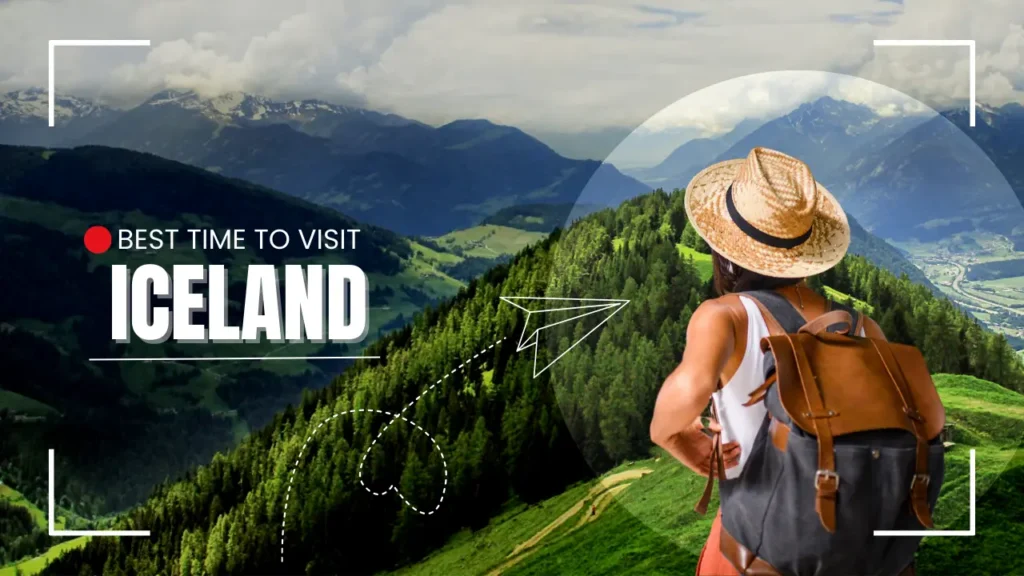Iceland is a land of breathtaking beauty, from its rugged volcanic landscapes and geothermal hot springs to the magical Northern Lights dancing in the sky. But one question often comes up before booking a flight: When is the best time to visit Iceland?
The truth is, Iceland is a year-round destination, and the best time to visit depends on what kind of experience you’re looking for. In this guide, we’ll explore each season in detail, so you can choose the perfect time to plan your trip.
🌞 Summer in Iceland (June to August)
Best for: Midnight Sun, road trips, hiking, and festivals
summer time is the maximum famous time to go to Iceland. During these months, daylight lasts almost 24 hours thanks to the Midnight Sun, especially around the summer solstice in late June.
Why Visit in Summer?
- More daylight: You can explore longer, with endless hours to sightsee and hike.
- Milder weather: Temperatures average between 10°C to 15°C (50°F to 59°F).
- Open roads: All areas, including the Highlands, are accessible.
- wildlife looking: Puffins and whales are usually visible all through summer season.
- Festivals: Experience local culture through events like Reykjavik Arts Festival or National Day (June 17).
Tip: Book your accommodation and rental car early—summer is Iceland’s peak season.

❄️ Winter in Iceland (November to February)
Best for: Northern Lights, ice caves, snowy landscapes
Winter in Iceland brings shorter days and cold temperatures, but it’s also a magical time for those who want to see the Northern Lights and experience Iceland in its quiet, snowy beauty.
Why Visit in Winter?
- Aurora Borealis: Clear, dark skies increase your chances of seeing this natural light show.
- Ice Caves: Only open in winter, these glacier ice caves are unforgettable.
- Winter sports: Try snowmobiling, glacier hiking, or enjoy hot springs surrounded by snow.
- Festive atmosphere: The Christmas season in Iceland is cozy and full of charm.
Tip: Daylight can be as short as 4 hours in December, so plan accordingly.
🍁 Autumn in Iceland (September to October)
Best for: Northern Lights, fewer crowds, and colorful landscapes
Autumn is often overlooked, but it’s a wonderful time to visit. Temperatures begin to cool, but the landscapes transform with beautiful fall colors, and the Northern Lights season begins.
Why Visit in Autumn?
- Northern lighting go back: As nights get darker, the aurora becomes seen again.
- Fewer tourists: Enjoy a quieter, more relaxed trip.
- Lower prices: Flights and hotels are generally cheaper than in summer.
- Photographic beauty: The fall colors make Iceland’s landscapes even more stunning.
Tip: Be prepared for sudden changes in weather—layers are your friend.
🌷 Spring in Iceland (March to May)
Best for: Budget travel, blooming nature, and longer days
Spring is the shoulder season among iciness and summer time. It’s a great time to visit for those looking to beat the crowds and save money.
Why Visit in Spring?
- Melting snow: Roads start opening up, revealing hidden gems.
- Lambing season: Visit the countryside and see adorable baby sheep.
- Wildlife returns: Birds, including puffins, begin to return to the cliffs.
- Increasing daylight: Days quickly grow longer, offering more time to explore.
Tip: While the weather is improving, it can still be unpredictable—pack accordingly.
🗓️ Best Time by Activity
Here’s a quick guide based on your interests:
| | activity | | satisfactory Time to go to | |
|---|---|
| Northern lighting fixtures | October to March |
| Midnight Sun | Mid-June to Early July |
| Whale looking | May to August |
| Puffin Watching | May to August |
| Ice Cave tours | November to March |
| Hiking and Camping | June to September |
| Budget Travel | March to May, September |
| Fewer vacationers | April, May, October |
📦 What to Pack for Iceland (Any Time of Year)
No matter when you visit, Icelandic weather is famously unpredictable, so it’s important to pack smart:
- Waterproof jacket and pants
- Thermal base layers
- Warm hat and gloves
- Sturdy hiking boots
- Swimsuit (for hot springs)
- Camera and tripod
- Reusable water bottle
- Power adapter for electronics
Tip: Dress in layers—you can always remove them if the sun comes out.
🏁 Final Thoughts: When Should You Go?
selecting the exceptional time to go to Iceland relies upon on what type of adventure you need. If you want sunlight, road trips, and hiking, go in summer. If you’re chasing the Northern Lights and love winter vibes, visit between November and March. For a quiet, more budget-friendly escape, spring and autumn are ideal.
no matter while you go, Iceland will amaze you. The landscapes, the weather, and the experience change with the seasons—but every time of year offers something unique. Just remember to pack well, stay flexible, and get ready for an unforgettable journey.
Would you like a sample itinerary for each season or tips on booking affordable travel in Iceland? I’d be happy to help!

